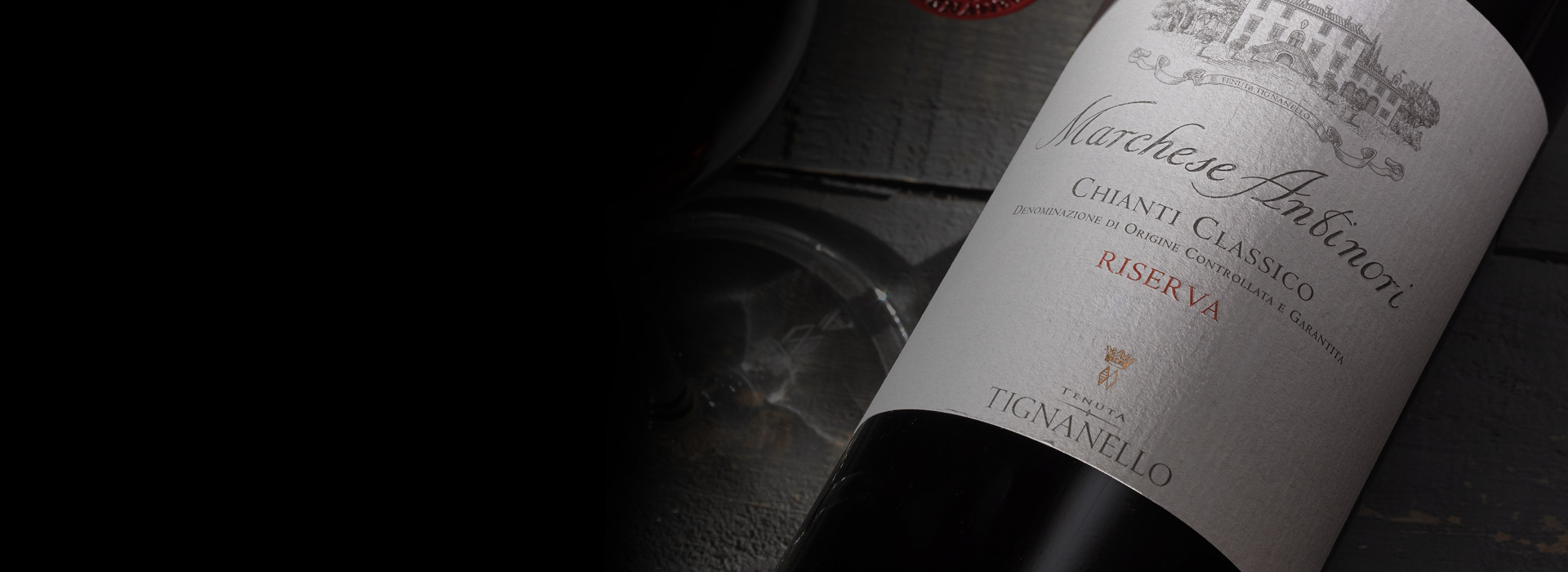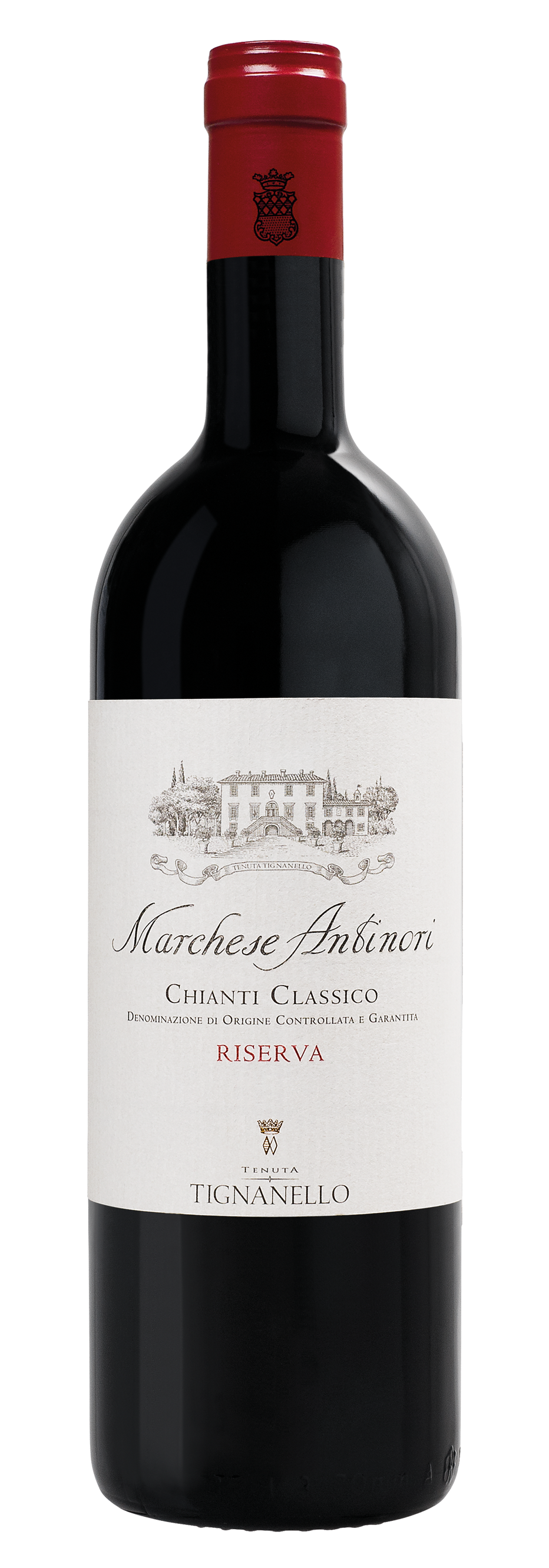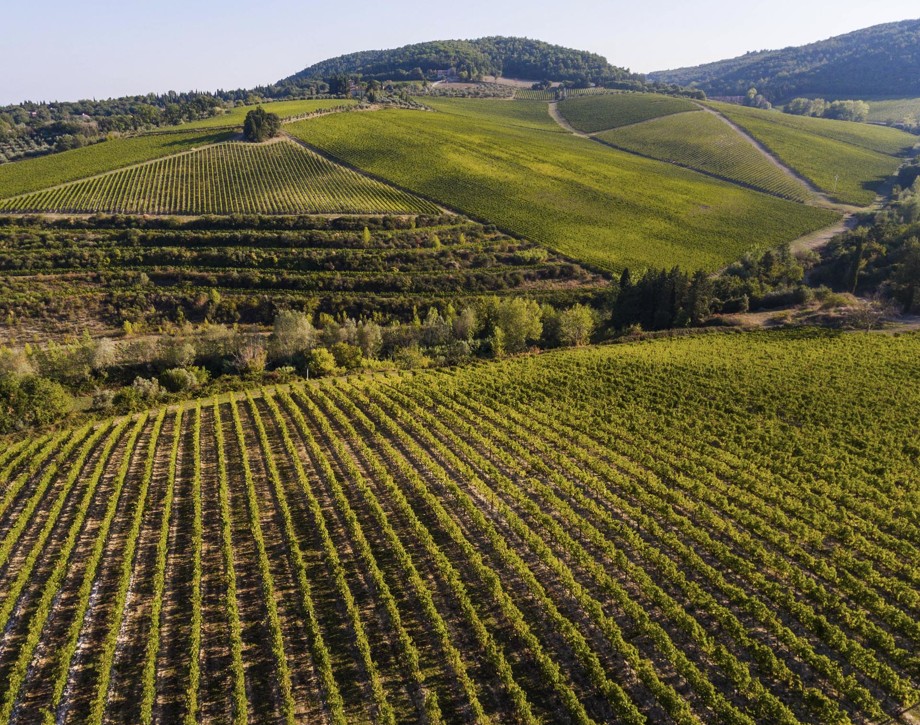Marchese Antinori

Climate
The growing season was characterized by an autumn 2007 and a winter 2008 not particularly cold and with little rainfall, conditions which led to an early bud break compared to the previous vintages of the same period. The spring, which marked the beginning of vine development, was marked by difficult weather, with frequent rainstorms up until the end of May and a resulting slowdown of vine growth which did not, however, compromise the health of the vineyard. June and July, in contrast, were quite warm and further rainfall did not arrive until the month of August, with scattered precipitation which assisted the plants in the development of both their vegetation and their grapes. September and October were very favorable for harvest operations, thanks as well to temperature swings between daytime heat and nighttime rain which gave grapes of optimum quality. The finest selections of Sangiovese and Cabernet for the Marchese Antinori Chianti Classico Riserva were harvested during the first days of the month of October and, from the very beginning of their transformation into wine, the musts showed very interesting aromas, flavors, and color, which promised a high level vintage.
Vinification
The climatic conditions allowed a planning and execution of harvesting operations which fully brought out the character of the individual vineyard plots, and picking, entirely by hand, was adapted to the differences of exposure, altitude, ripeness level, and analytical characteristics of the grapes of the various plots. The grape bunches, once in the fermenting cellars, were delicately destemmed and pressed to conserve to the maximum degree the varietal character of the aromas and flavors, an operation of great importance in the case of Sangiovese. Once in the stainless steel fermenting tanks the grapes were macerated with the aid of periodic, and very soft, pumping over the cap of skins and of délestage (“rack and return”) techniques in order to guarantee an extraction which was intense and, at the same time, capable of giving wines of elegance and roundness of tannins. From the very start of fermentation operations the musts showed rich colors and structure thanks to the highly favorable weather of the growing season. The fermentation lasted approximately seven days and was followed by a further eight to nine days period of skin contact in the fermenting tanks. Immediately after it was run off its skins, the wine went into small oak barrels, for the most part of French origin, in order to go through a complete malolactic fermentation, which took place spontaneously by the end of the year. After racking, the wines, still separated by their vineyard provenance, were aged for a year in French and Hungarian oak barrels. During this lengthy phase the various lots were constantly tasted and monitored in order to maximize their quality level during this period of barrel aging and were then assembled into a final blend at the end of their aging cycle. The wine was given a further twelve months of bottle aging before release.
Historical Data
The Tignanello estate is located in the heart of the Chianti Classico production zone, nestled between the valleys of the Greve and Pesa rivers, and extends over close to 800 total acres (319 hectares), some 130 of which (415 hectares) are planted to vines. The vineyards consist principally of the native Sangiovese grape along with such non-traditional varieties as Cabernet Sauvignon and Cabernet Franc. The Marchese Antinori is an historic wine of the Antinori cellars which, since 2011, is produced from the grapes of the Tignanello estate. It is a wine which presents itself as the full expression of the quality and elegance of the Sangiovese of this part of Tuscany.
Tasting Notes
A very intense ruby red in color, the Marchese Antinori 2008 shows a nose with captivating notes of ripe fruit (blackberries, plums, and wild cherries) which perfectly reflect the characteristics of the growing season. On the palate the wine is well structured, with supple tannins which are both sweet and rounded; the lengthy finish promises long life and the aftertaste recalls, together, notes of ripe fruit and licorice.

The Wine
This Antinori family’s historic label, since the 2011 vintage Marchese Antinori has been produced with grapes exclusively from the Tignanello vineyard. It’s made almost entirely with Sangiovese with a small percentage of other complementary varieties. A wine that fully expresses the quality and elegance of Sangiovese grapes grown in this area.

Climate
The growing season was characterized by an autumn 2007 and a winter 2008 not particularly cold and with little rainfall, conditions which led to an early bud break compared to the previous vintages of the same period. The spring, which marked the beginning of vine development, was marked by difficult weather, with frequent rainstorms up until the end of May and a resulting slowdown of vine growth which did not, however, compromise the health of the vineyard. June and July, in contrast, were quite warm and further rainfall did not arrive until the month of August, with scattered precipitation which assisted the plants in the development of both their vegetation and their grapes. September and October were very favorable for harvest operations, thanks as well to temperature swings between daytime heat and nighttime rain which gave grapes of optimum quality. The finest selections of Sangiovese and Cabernet for the Marchese Antinori Chianti Classico Riserva were harvested during the first days of the month of October and, from the very beginning of their transformation into wine, the musts showed very interesting aromas, flavors, and color, which promised a high level vintage.
Vinification
The climatic conditions allowed a planning and execution of harvesting operations which fully brought out the character of the individual vineyard plots, and picking, entirely by hand, was adapted to the differences of exposure, altitude, ripeness level, and analytical characteristics of the grapes of the various plots. The grape bunches, once in the fermenting cellars, were delicately destemmed and pressed to conserve to the maximum degree the varietal character of the aromas and flavors, an operation of great importance in the case of Sangiovese. Once in the stainless steel fermenting tanks the grapes were macerated with the aid of periodic, and very soft, pumping over the cap of skins and of délestage (“rack and return”) techniques in order to guarantee an extraction which was intense and, at the same time, capable of giving wines of elegance and roundness of tannins. From the very start of fermentation operations the musts showed rich colors and structure thanks to the highly favorable weather of the growing season. The fermentation lasted approximately seven days and was followed by a further eight to nine days period of skin contact in the fermenting tanks. Immediately after it was run off its skins, the wine went into small oak barrels, for the most part of French origin, in order to go through a complete malolactic fermentation, which took place spontaneously by the end of the year. After racking, the wines, still separated by their vineyard provenance, were aged for a year in French and Hungarian oak barrels. During this lengthy phase the various lots were constantly tasted and monitored in order to maximize their quality level during this period of barrel aging and were then assembled into a final blend at the end of their aging cycle. The wine was given a further twelve months of bottle aging before release.
Historical Data
The Tignanello estate is located in the heart of the Chianti Classico production zone, nestled between the valleys of the Greve and Pesa rivers, and extends over close to 800 total acres (319 hectares), some 130 of which (415 hectares) are planted to vines. The vineyards consist principally of the native Sangiovese grape along with such non-traditional varieties as Cabernet Sauvignon and Cabernet Franc. The Marchese Antinori is an historic wine of the Antinori cellars which, since 2011, is produced from the grapes of the Tignanello estate. It is a wine which presents itself as the full expression of the quality and elegance of the Sangiovese of this part of Tuscany.
Tasting Notes
A very intense ruby red in color, the Marchese Antinori 2008 shows a nose with captivating notes of ripe fruit (blackberries, plums, and wild cherries) which perfectly reflect the characteristics of the growing season. On the palate the wine is well structured, with supple tannins which are both sweet and rounded; the lengthy finish promises long life and the aftertaste recalls, together, notes of ripe fruit and licorice.

Tenuta Tignanello
The Tenuta Tignanello estate is in the heart of Chianti Classico, in the gently rolling hillsides between the Greve and Pesa river valleys. It extends over an area of 319 hectares (788 acres), of which about 165 (407 acres) are dedicated to vines. Two of the estate’s prized vineyards are on the same hillside, Tignanello and Solaia, on soils that originated from marine marlstone from the Pliocene period rich in limestone and schist.
Soil
Calcareous rocky soils with alberese (marl limestone) and marl.


















